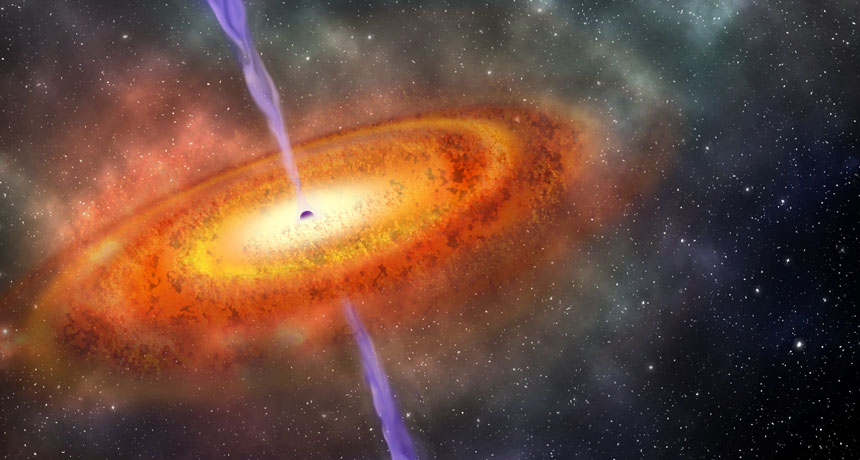The most distant quasar ever spotted hails from the universe’s infancy

GRAVITATIONAL GUZZLER The black hole powering the quasar J1342+0928 (illustrated) weighs as much as 800 million suns, but it existed when the universe was just 5 percent of its current age. Scientists aren’t sure how black holes grew so big so early.
Robin Dienel, courtesy of the Carnegie Institution for Science







